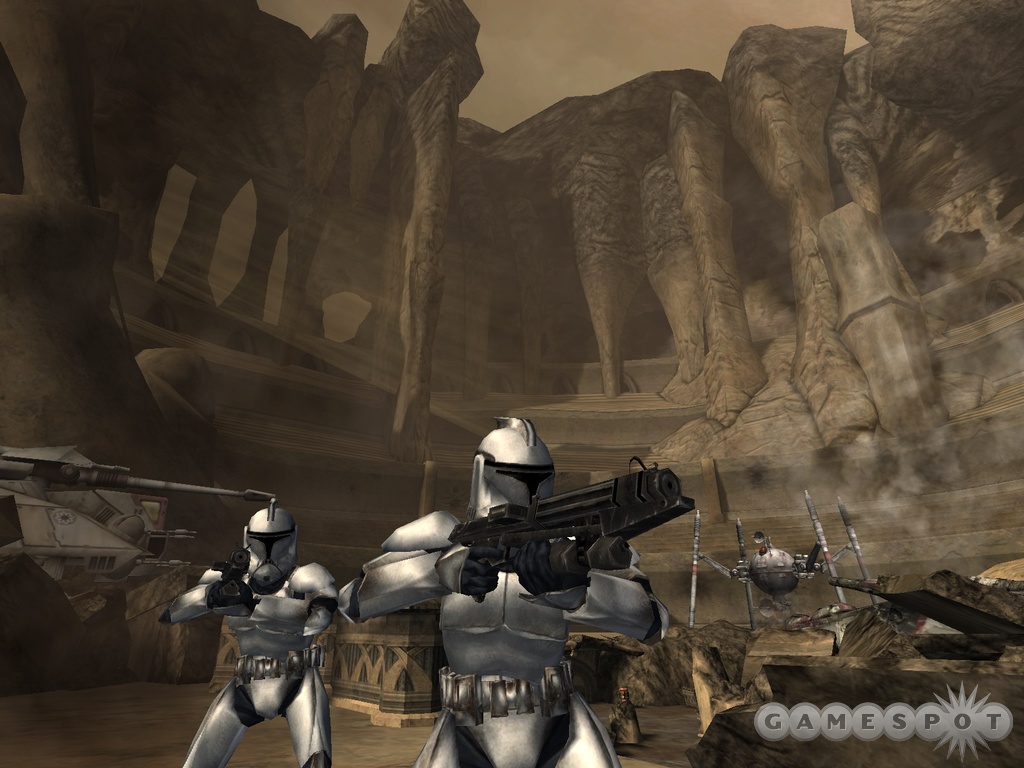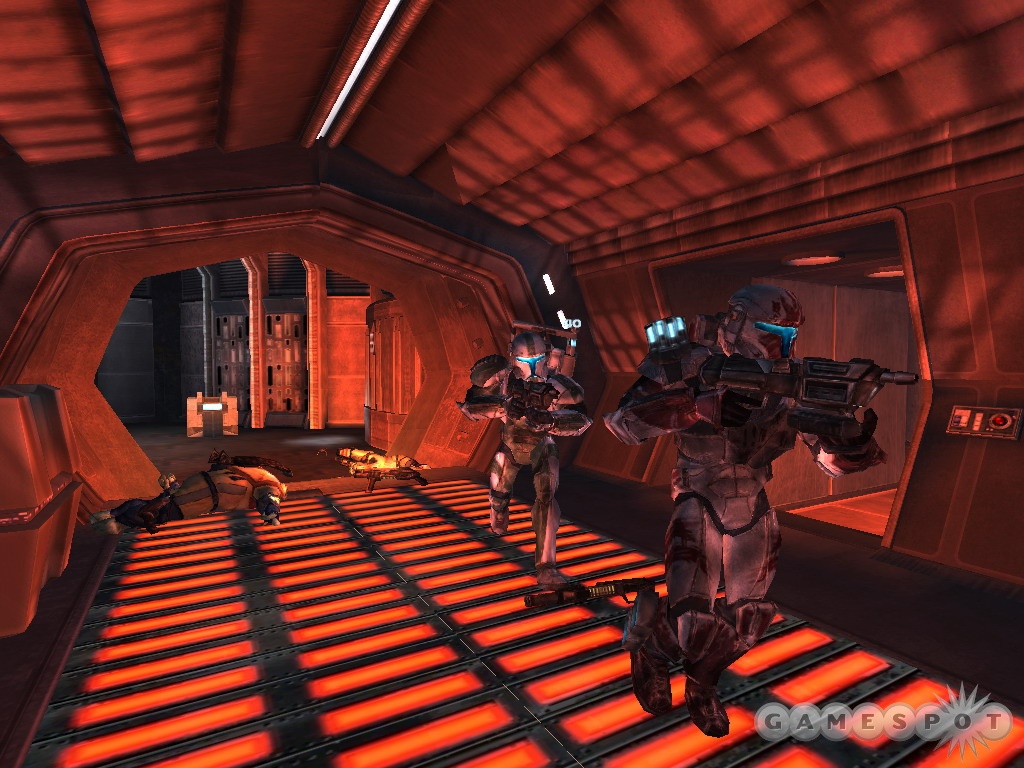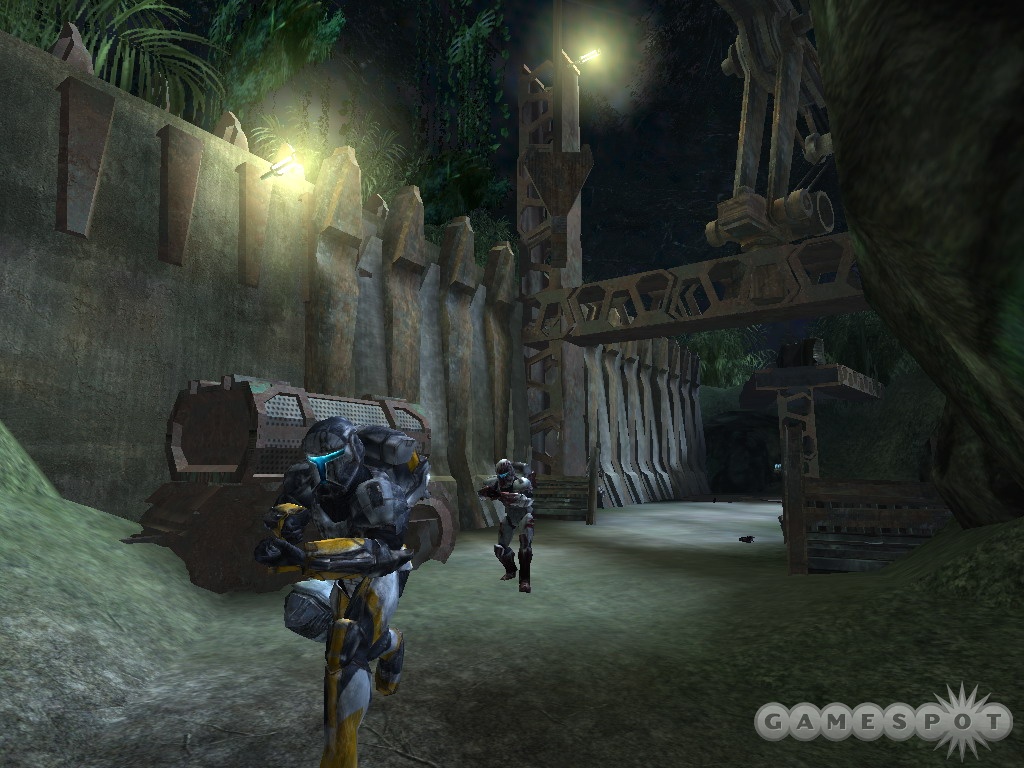Star Wars Republic Commando Designer Diary 5 - Combat Audio
Sound designer David Collins and composer Jesse Harlin discuss the process of creating the Star Wars shooter's soundscape.
In March, Star Wars Republic Commando will take you behind the scenes of the Clone Wars as the leader of an elite squad of covert specialists. Sound is an immensely important component of the combat experience, and here to tell us exactly how they built Republic Commando's aural backdrop are LucasArts' David Collins and Jesse Harlin.
Underscoring the Action
By David Collins, sound designer, and Jesse Harlin, composer 
My name is David Collins, and I'm the audio lead and sound designer on Star Wars Republic Commando. My job is to oversee the creation of the game's soundtrack by managing a sound team, as well as being the primary contributor of sounds for the game.
Star Wars is such a strong license, and some of the sound effects and music cues that we work with are so famous that, as a sound designer, I'm looking for new stuff to create...the stuff that you don't get to hear in the films…the stuff that I can create in the design style of my hero, Ben Burtt (the original Star Wars sound guru), [stuff] that can stand up to all the famous blasters and creatures and (hopefully) work so well together that players won't know the difference between what came from the film and what I made for the game.
Well, Republic Commando not only had those elements, but it featured them. This wasn't a view of the Star Wars universe through the rose-colored glasses of the Jedi…this was the Star Wars universe as seen through the battle-weary eyes of four highly trained, very intense soldiers, and I wanted it to sound that way. The battledroids needed to be a bit rustier and raspy, the weapons needed to sound slightly more militaristic and ballistic, the armor and gear needed to be heavy and loud, and the music needed to provoke a sense of military pride, bravery in the face of death, and just a hint of tragedy. But finding the balance between the new and the familiar was going to be quite a challenge. How do you keep Star Wars sounding fresh and exciting without straying too far away from the brilliant film sound design and music?
Weapons

The weapon sounds went through almost a dozen iterations. In trying to find the balance between military sounds and Star Wars sounds, I collected tons of different weapon recordings and designs. At one point, the DC-17 sounded like an M16, with just a hint of that Star Wars blaster in it. What I discovered is that Star Wars sound effects just need a hint of that military, ballistic sound. Once I got too far away from that classic blaster sound, the game actually started to stray too far away from the Star Wars brand. We ended up using Star Wars weapon sounds as the starting point, and then heavily processed, edited, and mixed them in with other weapons to make them unique and warlike, but still recognizably Star Wars. Along with the original sounds for enemy weapons and vehicles, the game has a nice balance between everyone's favorite sounds and new material that is fresh and exciting. The game also has weapons that nobody has ever heard before, like a Trandoshan shotgun, a Geonosian beam weapon, or the DC-15, the Commando's sidearm. This is one of my favorites: you get the crack of a semiautomatic pistol with just a hint of that classic Han Solo blaster sound. I hope you enjoy it!
Keep your ears open for all of the other new sonic additions to the Star Wars universe: the machines, Foley, radio chatter, creatures, locations, characters…even new astromech sounds. Now I'm going to turn it over to Jesse Harlin, the music composer for Republic Commando.
Music
Hi, I'm Jesse Harlin, the music composer. I'd like to give you an overview of the musical work that we're doing for the game.
The entire goal with Republic Commando was to present the player with a completely immersive Clone Wars experience. Very early on, the game's audio lead (David), director, and producers knew that they wanted a dark, interactive musical score to not only help set the grim tone for the gameplay, but also to function at times almost as a road map for the player--a system in which player interaction could influence the music playback and musical cues could offer clues to gameplay scenarios.

Working very closely with our audio programmers, we designed an adaptive music system that offered me an incredible amount of creative flexibility. The result is a rich musical score for Republic Commando that can change very fluidly from atmospheric suspense cues to an AI-driven battle music engine to scripted event-driven music stingers, and back again. In addition to an hour and a half of original music, we've used sections of John Williams' familiar scores to ground the musical vocabulary squarely in the Star Wars universe.
As the final bit of polish, I created the ancient Mandalorian language specifically for Republic Commando. The Clones' ancestral language is largely inspired by a mix of Hungarian, Celtic war poetry, and Soviet proletariat work anthems. We then traveled to Seattle where a male choir gave voice to the new Mandalorian battle hymns, infusing our Delta squad with a tragic sense of honor, brotherhood, and bittersweet duty.
Got a news tip or want to contact us directly? Email news@gamespot.com
Join the conversation